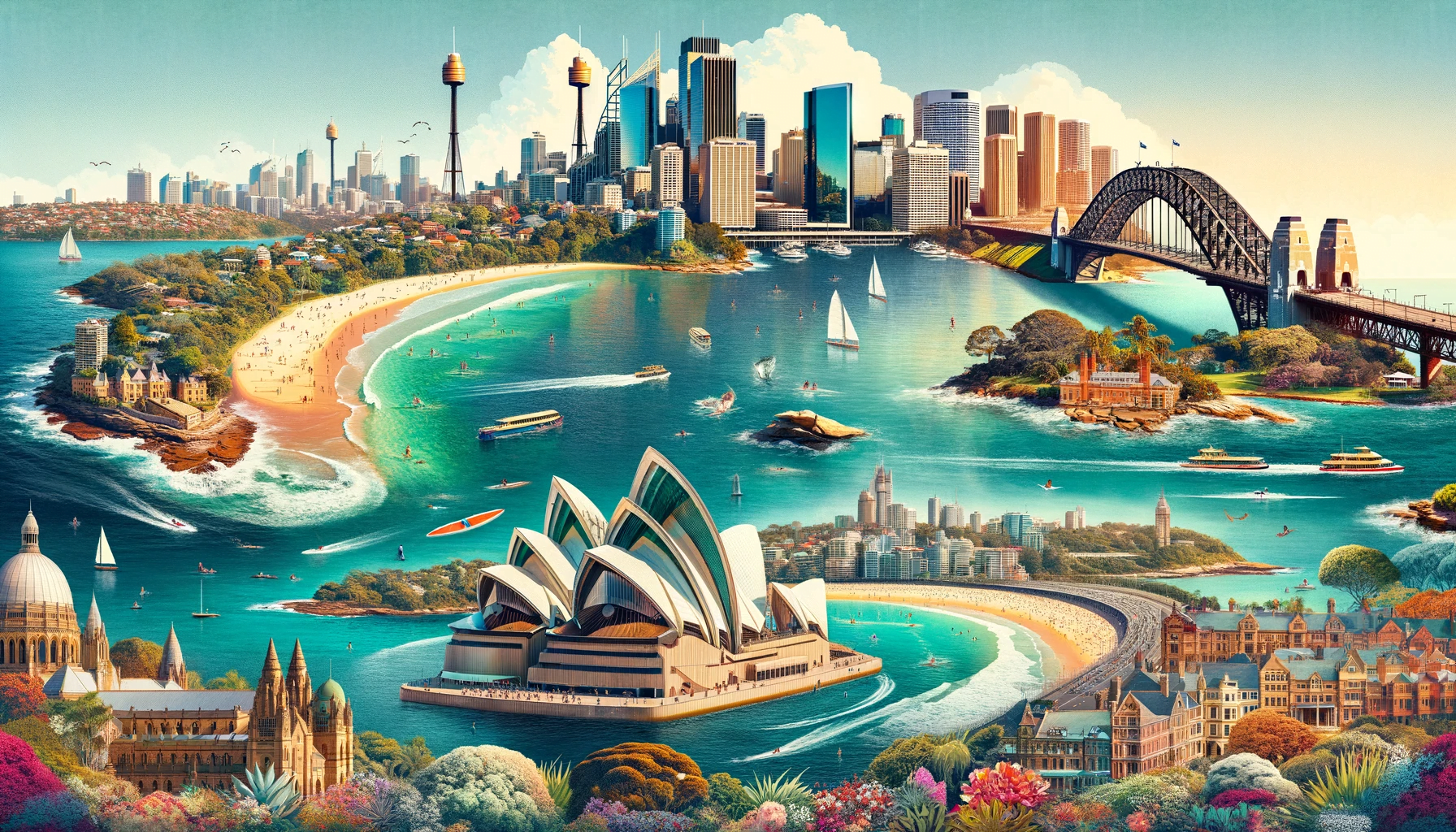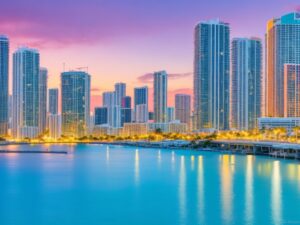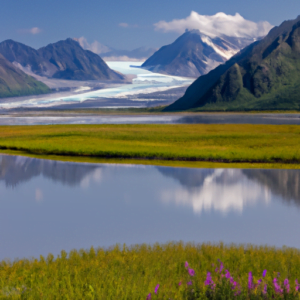Ready to embark on a journey of cultural exploration? Look no further than the majestic Sydney Opera House, a UNESCO World Heritage Site that captivates visitors with its stunning architecture and rich history. Get ready to immerse yourself in the magic of this iconic landmark as you uncover its secrets, admire its breathtaking views, and experience the wonder that has made it a must-visit destination for travelers from around the globe. So, grab your camera and let’s dive into this comprehensive guide to the Sydney Opera House and other UNESCO World Heritage Sites waiting to be discovered.
Table of Contents
ToggleSydney Opera House
Overview
Welcome to the stunning Sydney Opera House, one of Australia’s most iconic and recognizable landmarks. Situated on the picturesque Sydney Harbour, this architectural masterpiece attracts visitors from all over the world. With its distinctive sail-like design and breathtaking location, the Sydney Opera House is not just a venue for world-class performances but also a cultural symbol and a testament to human creativity.
History
The history of the Sydney Opera House can be traced back to the mid-20th century when the idea for a new performing arts venue began to take shape. Danish architect Jørn Utzon won an international design competition in 1957 with his visionary concept, and the construction of the Opera House commenced in 1959. Despite facing numerous engineering and financial challenges, the building was finally completed in 1973, becoming an enduring symbol of triumph and perseverance.
Design and Architecture
The design of the Sydney Opera House is nothing short of extraordinary. Utzon’s vision was inspired by nature, particularly the sails of yachts gliding across the harbor. The building’s unique expressionist style and innovative use of precast concrete shells make it a true architectural marvel. Its striking silhouette against the backdrop of the harbor is a sight to behold, especially when illuminated at night, casting a captivating glow on the water.
Recognition as a World Heritage Site
In 2007, the Sydney Opera House was inscribed as a UNESCO World Heritage Site, acknowledging its outstanding cultural and architectural significance. This prestigious recognition highlights the Opera House’s global importance, placing it alongside other iconic landmarks such as the Great Wall of China and the Taj Mahal. The Opera House’s design and its impact on the world of architecture have left an indelible mark on the cultural landscape.
Tours and Visitor Information
Visiting the Sydney Opera House is a must for any traveler to Australia. Guided tours offer a unique opportunity to explore this architectural wonder up close. Knowledgeable guides will take you through the halls, theaters, and behind-the-scenes areas, providing fascinating insights into the Opera House’s rich history and its role as a performing arts center. Whether you choose the Essential Tour or the more in-depth Backstage Tour, you’ll gain a deeper appreciation for the artistry and craftsmanship of this iconic structure.
Major Performances and Events
While the Sydney Opera House is undoubtedly an architectural gem, it is also a vibrant cultural hub with a calendar packed full of performances and events. From opera and ballet to theater and live music, there is something for every taste. Be sure to check the schedule and book tickets in advance to witness breathtaking performances in one of the Opera House’s world-class theaters.
Dining Options
Feeling hungry after your exploration or before a show? The Sydney Opera House offers a variety of dining options to satisfy your culinary desires. Indulge in a fine dining experience at Bennelong Restaurant, which overlooks the harbor and offers a menu highlighting Australian cuisine. For a more casual affair, the Opera Bar is the perfect spot to savor delicious food and drinks while enjoying the mesmerizing views of the harbor.
Shopping
Take a piece of the Sydney Opera House home with you by visiting the onsite shops. From souvenirs and memorabilia to unique Australian-made products, these stores offer a range of items to suit all budgets and tastes. Whether you’re looking for a beautiful piece of jewelry or a quirky keepsake, you’ll find the perfect memento to remember your time at this iconic landmark.
Nearby Attractions
While the Sydney Opera House is undoubtedly a standout attraction in itself, its prime location means that there are plenty of other noteworthy destinations nearby. Take a stroll along the scenic Royal Botanic Garden, visit the historic neighborhood of The Rocks, or hop on a ferry for a leisurely ride across the harbor to Manly Beach. These nearby attractions offer a chance to further explore the beauty and history of Sydney.
Tips for Visiting
To make the most of your visit to the Sydney Opera House, here are a few insider tips. Firstly, be sure to check the performance schedule and ticket availability in advance, as popular shows can sell out quickly. Additionally, consider taking a tour early in the day to avoid crowds. Finally, don’t forget your camera to capture the iconic views and architecture.
UNESCO World Heritage Sites in Australia
Great Barrier Reef
The Great Barrier Reef is a living masterpiece and the largest coral reef system on the planet. Located off the coast of Queensland, this stunning natural wonder is a haven for biodiversity, with thousands of species of marine life and vibrant coral formations. Snorkeling or diving in the crystal-clear waters of the Great Barrier Reef is an unforgettable experience that allows you to explore a truly unique ecosystem.
Kakadu National Park
Home to ancient rock art, stunning waterfalls, and diverse wildlife, Kakadu National Park is a treasure trove of natural and cultural wonders. Located in the Northern Territory, this vast park showcases the beauty of the Australian Outback, from sprawling wetlands to rugged escarpments. Exploring Kakadu National Park offers a glimpse into the rich Aboriginal heritage and the incredible landscapes that have captivated visitors for centuries.
Uluru-Kata Tjuta National Park
The majestic red rock formation of Uluru, also known as Ayers Rock, is the centerpiece of the Uluru-Kata Tjuta National Park in the heart of Australia. This sacred site holds deep spiritual significance for the Aboriginal people and attracts visitors from around the world who come to witness its awe-inspiring beauty. Watching the sunrise or sunset over Uluru is a truly magical experience that allows you to connect with the natural wonders of this ancient land.
Purnululu National Park
Located in Western Australia, Purnululu National Park is home to the iconic Bungle Bungle Range. These distinctive beehive-shaped domes create a breathtaking landscape that is unlike anything else on Earth. A helicopter ride over the park offers a bird’s-eye view of this extraordinary geological formation, while hiking trails take you through narrow gorges and hidden rock pools, revealing the park’s hidden gems.
Shark Bay, Western Australia
Shark Bay, located in Western Australia, is a haven for marine life and pristine natural beauty. With its unique combination of reefs, seagrass meadows, and white sandy beaches, this World Heritage Site offers a stunning backdrop for snorkeling, swimming, and exploring. One of the bay’s most famous inhabitants is the friendly bottlenose dolphins of Monkey Mia, who have captured the hearts of visitors for generations.
Fraser Island
Fraser Island, off the coast of Queensland, is the largest sand island in the world and a UNESCO World Heritage Site. With its serene freshwater lakes, crystal-clear creeks, and towering sand dunes, this island paradise offers endless opportunities for relaxation and adventure. From driving along the sandy highways to exploring the lush rainforests, Fraser Island is a nature lover’s dream.
Australian Convict Sites
Australia’s history as a penal colony is preserved in the Australian Convict Sites, a collection of 11 sites spread across the country. These sites bear witness to the forced migration and harsh conditions endured by convicts during the 18th and 19th centuries. Explore the ruins of former prisons, barracks, and other structures that serve as a reminder of Australia’s colonial past.
Royal Exhibition Building and Carlton Gardens
Situated in Melbourne, the Royal Exhibition Building and Carlton Gardens are a testament to Australia’s industrial and cultural heritage. The beautifully designed building, constructed in the late 19th century, has hosted important international exhibitions and events. Surrounded by meticulously manicured gardens, this World Heritage Site is a tranquil retreat in the heart of the city.
Gondwana Rainforests of Australia
The Gondwana Rainforests of Australia are a stunning collection of rainforests that provide a glimpse into the continent’s ancient past. Spread across several national parks in New South Wales and Queensland, these forests are among the most significant and diverse in the world. Immerse yourself in the lush greenery, marvel at ancient trees, and listen to the symphony of birds and wildlife that call this magical place home.
Wet Tropics of Queensland
The Wet Tropics of Queensland, another World Heritage Site in Australia, encompass the ancient rainforests of North Queensland. This region is renowned for its extraordinary biodiversity, from rare plant species to endemic animals. Embark on a hike through the dense foliage, cool off in cascading waterfalls, and keep an eye out for colorful birds and elusive wildlife as you explore this natural wonderland.
UNESCO World Heritage Sites in New Zealand
Tongariro National Park
Tongariro National Park, located in the North Island of New Zealand, is a land of volcanic wonders and dramatic landscapes. The park is home to three active volcanoes: Mount Tongariro, Mount Ngauruhoe, and Mount Ruapehu. Hiking the Tongariro Alpine Crossing is a must-do experience, offering breathtaking views of steaming vents, vibrant turquoise lakes, and rugged terrain.
Te Wahipounamu – South West New Zealand
Te Wahipounamu, located in the South Island of New Zealand, is a region of unparalleled natural beauty and significance. This World Heritage Site comprises four national parks: Westland Tai Poutini, Aoraki/Mount Cook, Mount Aspiring, and Fiordland. From the majestic peaks of the Southern Alps to the awe-inspiring fjords, exploring Te Wahipounamu is like stepping into a postcard-perfect wilderness.
New Zealand Sub-Antarctic Islands
The New Zealand Sub-Antarctic Islands are a group of remote and untouched islands located in the southern Pacific Ocean. These islands are an important breeding ground for many rare and endangered species, including penguins, albatrosses, and sea lions. Visiting this pristine and protected ecosystem is a once-in-a-lifetime opportunity to witness the wonders of nature in its purest form.
Waitomo Caves
Located in the North Island of New Zealand, the Waitomo Caves are a mesmerizing underground wonderland. These limestone caves are adorned with thousands of glowworms that emit a soft, ethereal light, creating a magical atmosphere. Take a boat ride through the glowworm grotto and marvel at the celestial beauty that awaits you in the depths of this natural marvel.
Mount Cook National Park
As the highest peak in New Zealand, Aoraki/Mount Cook is a sight to behold. Situated in Mount Cook National Park, this majestic mountain offers a range of activities, from guided hikes and glacier tours to stargazing. The park’s pristine alpine landscapes and shimmering lakes provide an ideal backdrop for outdoor enthusiasts and nature lovers.
Aoraki / Mount Cook National Park and Village
Aoraki/Mount Cook National Park and Village are a gateway to the spectacular Southern Alps and the tallest peaks in New Zealand. The village provides various accommodation options and serves as a base for mountaineering expeditions and outdoor adventures. Enjoy panoramic views of snow-capped mountains, embark on scenic hikes, or simply take in the serenity of this alpine paradise.
Fiordland National Park and Milford Sound
Fiordland National Park, located in the South Island of New Zealand, is a haven of rugged fjords, cascading waterfalls, and ancient forests. The crown jewel of this breathtaking landscape is Milford Sound, often called the Eighth Wonder of the World. Cruising through the sound’s deep waters, surrounded by towering cliffs and dramatic scenery, is an experience that will leave you in awe of nature’s grandeur.
Pitcairn Islands
The remote Pitcairn Islands are an archipelago in the South Pacific, known for their isolation and pristine natural environment. As one of the least populated territories in the world, these islands offer an untouched paradise for nature enthusiasts and those seeking solitude. Pristine beaches, vibrant marine life, and unique flora make the Pitcairn Islands a hidden gem waiting to be explored.
Stewart Island / Rakiura
Located off the southern coast of New Zealand’s South Island, Stewart Island/Rakiura is a sanctuary of untouched wilderness. This rugged island is a tranquil retreat, perfect for nature lovers and outdoor adventurers. Immerse yourself in the island’s dense forests, spot rare bird species, and embark on scenic coastal walks to capture the beauty of this unspoiled paradise.
Whanganui River
The Whanganui River, located in the North Island of New Zealand, is the country’s longest navigable river and holds deep cultural significance for the local iwi (Maori tribes). Journey down the river on a scenic tour, paddle in a traditional canoe, and discover the stories and traditions associated with this sacred waterway. Exploring the Whanganui River allows you to connect with New Zealand’s rich Maori heritage and natural wonders.
In conclusion, Australia and New Zealand boast a wealth of UNESCO World Heritage Sites that showcase the beauty of their natural landscapes, cultural heritage, and architectural wonders. Whether you find yourself exploring the Sydney Opera House or embarking on an adventure through the national parks, these sites offer an opportunity to connect with the rich history, remarkable biodiversity, and extraordinary landscapes that define these two incredible countries. So pack your bags, grab your camera, and prepare to be amazed as you uncover the treasures of these UNESCO World Heritage Sites.





